The warm, talc sands of Florida’s Gulf Coast are a wintering hot spot for thousands of migrant birds, as well as the already impressive array of resident birds. The balmy waters provide hungry beaks with fish, mollusks, and crustaceans throughout the northern winter. The coastline is the perfect hunting ground for a nature enthusiast, keen to photograph wildlife that has become accustomed to people. One family of birds that calls the Florida coastline, and lagoons home, is the tern family.
There are forty five species of tern occupying water courses around the world. In many places, I have found these skydiving speedsters difficult to photograph, but on the winter beaches of Florida, the second largest member of the family is not at all camera-shy – The Royal Tern.

Second only in size to the Caspian tern, the Royal tern measures in at a body length of up to 20 inches (50 cm) and a wingspan of up to 53 inches (135 cm). During the breeding season the bird’s cap becomes completely black. The oldest recorded Royal tern was found to be over 30 years old. Its habitat is almost exclusively coastal waters where it hunts for small fish and shrimps by diving, beak first, into shallow waters.
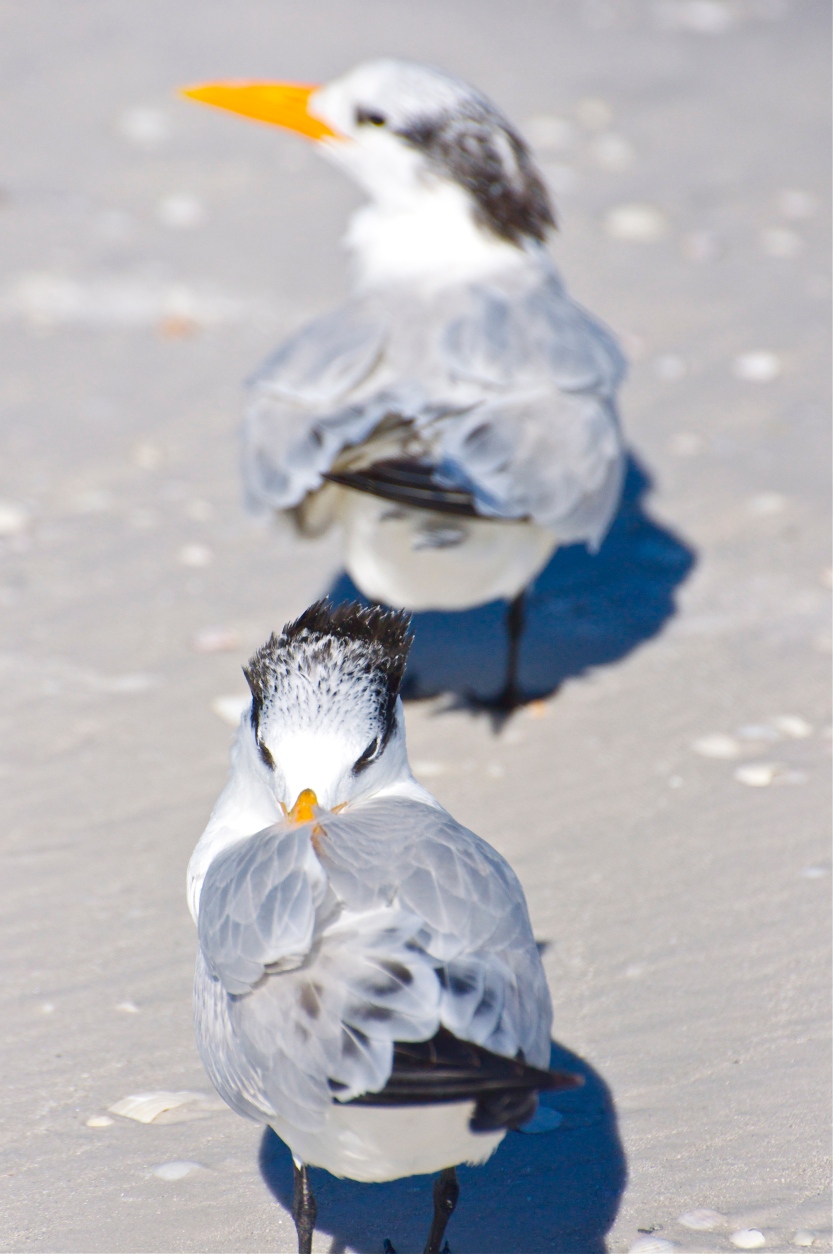
I have seen these beautiful terns on many of Florida’s gulf beach locations, but it was on the warm white sand bars at Honeymoon Island that I was able to walk among them. A flock of birds sat chattering on a sand bar surrounded by water so shallow that it had moved from warm to hot. The flock must have been 50 strong, made up of a couple of Laughing gulls, a dozen Sandwich terns, a single Black Skimmer and the rest were the unmistakable, high-visibility orange-billed Royal terns.
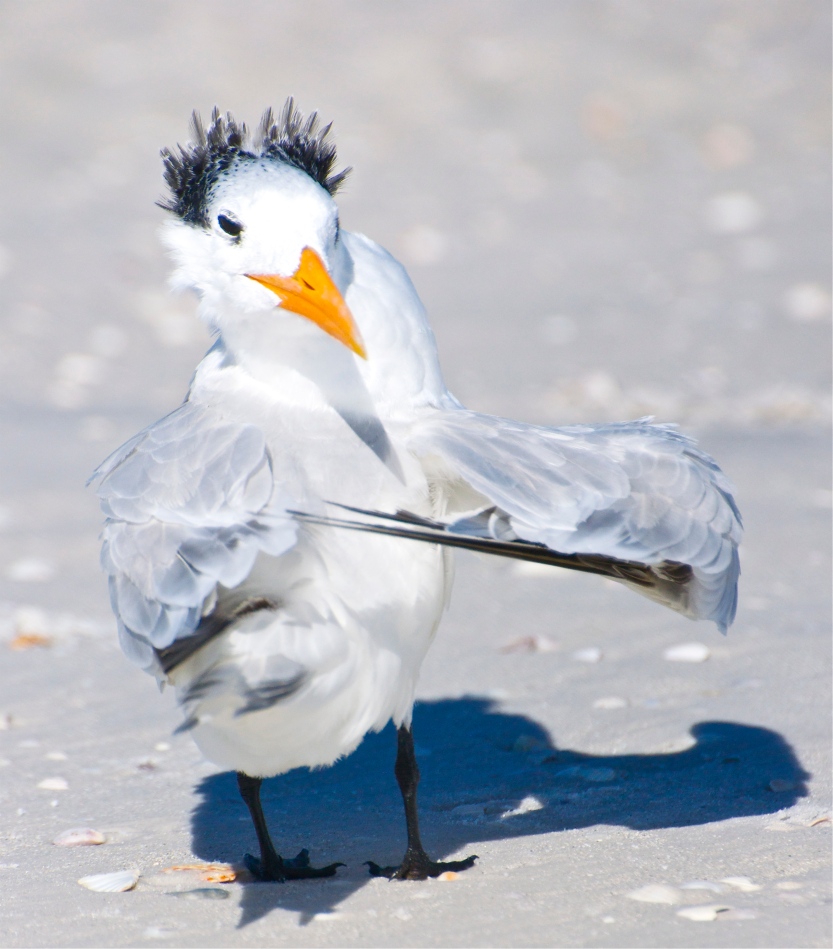
While my family prepare to launch themselves into warm seas, I picked up the camera and walked slowly to the flock. I had taken a couple of shots when the obligatory child ran through waving his arms, chasing the birds. More patient than I used to be, I sighed and guessed that the opportunity was gone. Remarkable the terns just lifted a few feet in the air, where they hung on the wind, before gracefully circling back to the same spot that they were in before the terrorizer arrived. Unfazed!
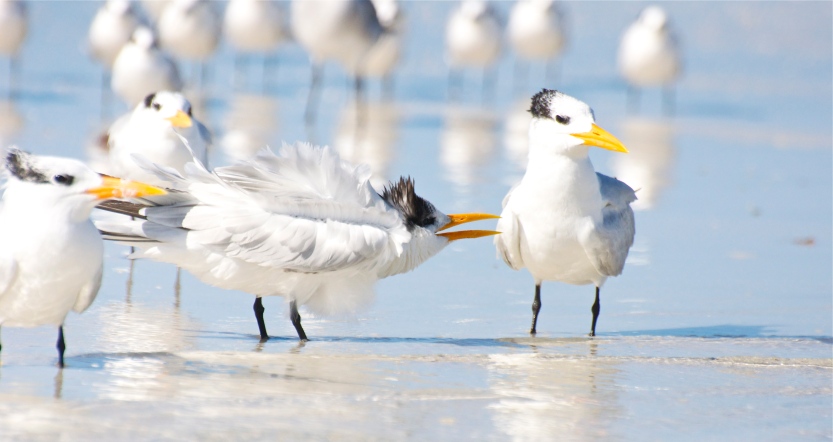
I watched a number of young birds, already into their first winter, begging for food and sometimes receiving it from adults. The Royal tern young will stay with the parents for several months and even migrate with them. Clearly they are not above taking advantage of mum and dad’s generosity, even though they are well able to fish for themselves.
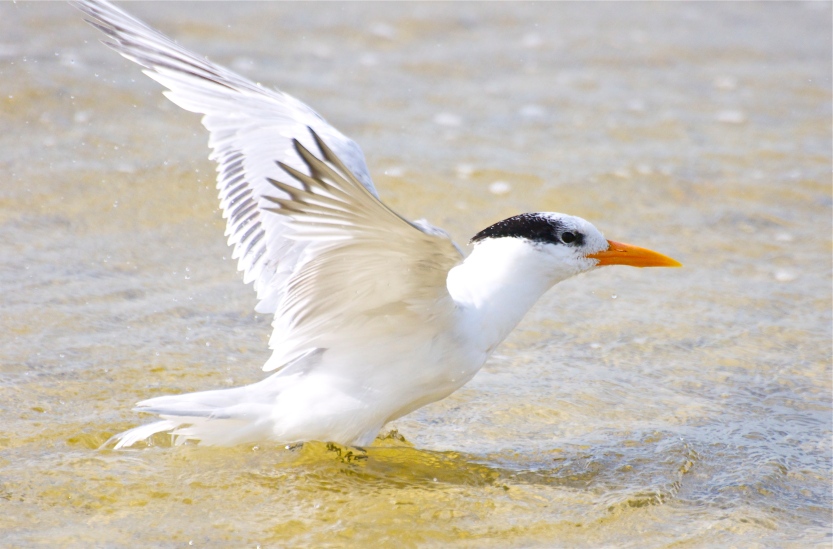
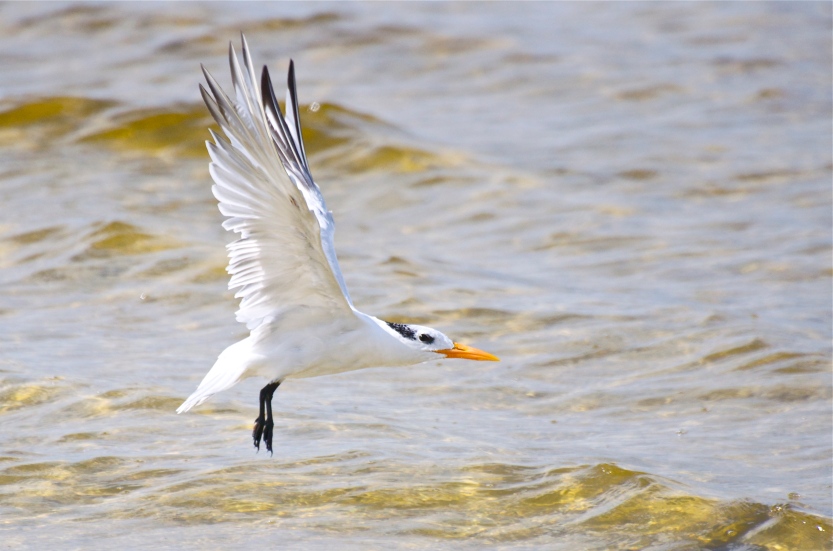

Royal terns maintain a stable population around the world, although it is in Florida where numbers have plummeted. 96% of the Florida population has been lost since 1966, primarily as a result of habitat loss and nest site disturbance.
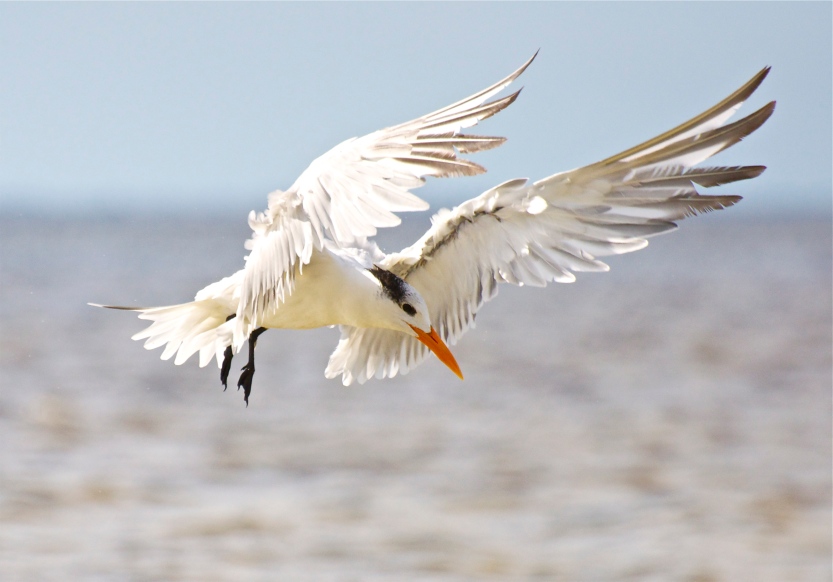
Like so many other coastal bird species, these wonderful creatures ask for clean water, a food source and enough undisturbed land to build their nest and raise a family. By carefully maintaining these habitats, we assure the survival of our coastal bird communities. It doesn’t seem like too much to ask for.
Next time you see a flock of gulls on a beach, take a closer look to see if there are terns among them. These beautifully graceful birds may go unnoticed to the untrained eye.
You can follow Incidental Naturalist through WordPress, Facebook or Twitter.
If you enjoyed this post, why not help others to connect with wildlife experiences by sharing this post on social media.
Your thoughts are welcomed in the comments section below.
Categories: USA
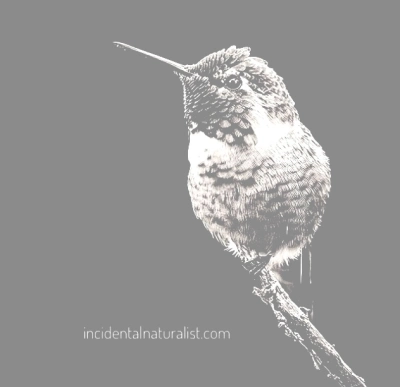




Beautiful pictures!
LikeLiked by 2 people
Love your writing, David – it’s always warm, informative, well-researched, and thoroughly enjoyable. Thank you! Hope Florida was fun of you and your family:)
LikeLiked by 2 people
Thank you so much for those kind words, Lara! Very much appreciated!
LikeLiked by 1 person
Great pictures!
LikeLiked by 1 person
Great story and wonderful photographs. You did a great job in capturing the tern in flight.
LikeLiked by 2 people
Thanks for the kind words! They move pretty fast so it took a bit of patience!
LikeLike
Excellent article and outstanding photography.
R/ Chris
LikeLiked by 2 people
Thanks for the kind and encouraging comment!
LikeLike
Although I’ve made several journeys to this area, I don’t remember any encounters with these birds. Th
LikeLiked by 2 people
Thanks for expanding my horizons!
LikeLiked by 1 person
It is lovely to see and then read your descriptions. I wonder if there is a way to link wildlife blogs to social media.,we have nature watch on Facebook but it is just photos with some id help.
LikeLiked by 2 people
I have a Facebook account for this blog as well as a Twitter account. Links are at the bottom of the front page.
LikeLiked by 1 person
Superbes photos et merci pour toutes ces belles infos!
LikeLiked by 2 people
Thanks for the kind comment, Stephanie!
LikeLiked by 1 person
I read this article to my bird loving four year old. He wants to go to Florida to see these beautiful birds now, and run through them. We will definitely be looking more closely at the flocks the next time we go to the beach. Beautiful pictures!
LikeLiked by 1 person
Thanks for the great comment! I love that you read this to your four year old. My guy is four this week so I can imaging the imagination ticking over. 🙂
LikeLiked by 1 person
Stunning photographs David. Really enjoy your blog. I would love to paint some of these in watercolor. What is your copyright policy? ~Ann
LikeLiked by 2 people
Hi Ann, thanks for the very kind comment! My policy is that the photos are to be used/reproduced only with permission, however I would be very happy for you to reproduce them in watercolor. That is your creation from my creation from natures! 🙂
LikeLiked by 1 person
I never tire of watching terns, their aerial skills are so impressive. Interesting facts, David, and gorgeous photos.
LikeLiked by 1 person
Thanks for the kind comment again, Jet! Alway appreciated! I know what you mean, they are so impressive to watch alongside gulls which appear clumsy by comparison.
LikeLiked by 1 person
Nice shot! Almost like a watercolor painting.
LikeLiked by 2 people
Thank you!
LikeLiked by 1 person
Superb photography and a always a great narrative, David.
I very much like the the layout of your blog. Which theme are you currently using?
LikeLiked by 1 person
Thank you so much for the kind comment. I’m sure you know that it is very encouraging to get positive feedback. I am currently using the Radcliffe theme. I thought about changing to a magazine style theme but I love the striking images that can be presented with Radcliffe.
LikeLike
Greatly mesmerized by all ur uploaded pics..👍👍
LikeLiked by 1 person
Thank you for this kind comment! 😊
LikeLike